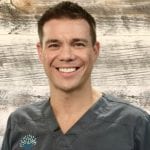Researchers recently published a review of orthopedic literature to determine if there is good supporting evidence for several orthopedic injury procedures. https://www.bmj.com/content/374/bmj.n1511 Below is the abstract with a summary of their findings.
Common elective orthopedic injury procedures and their clinical effectiveness: umbrella review of level 1 evidence
DESIGN: Umbrella review of meta-analyses of randomized controlled trials or other study designs in the absence of meta-analyses of randomized controlled trials
DATA SOURCES: Ten of the most common elective orthopedic procedures

- arthroscopic anterior cruciate ligament reconstruction
- arthroscopic meniscal repair of the knee
- arthroscopic partial meniscectomy of the knee
- arthroscopic rotator cuff repair
- arthroscopic subacromial decompression
- carpal tunnel decompression
- lumbar spine decompression
- lumbar spine fusion
- total hip replacement
- total knee replacement
RESULTS: Randomised controlled trial evidence supports the superiority of carpal tunnel decompression and total knee replacement over non-operative care. No randomized controlled trials specifically compared total hip replacement or meniscal repair with non-operative care. Trial evidence for the other six procedures showed no benefit over non-operative care. Randomized controlled trials have shown that arthroscopic anterior cruciate ligament reconstruction, arthroscopic partial meniscectomy, arthroscopic repair for acute rotator cuff tears, arthroscopic subacromial decompression, lumbar spinal decompression for spinal canal stenosis, and spinal fusion for degenerative disc disease have similar outcomes to non-operative care.
CONCLUSIONS: Although they may be effective overall or in certain subgroups, no strong, high quality evidence base shows that many commonly performed elective orthopedic procedures are more effective than non-operative alternatives. Despite the lack of strong evidence, some of these procedures are still recommended by national guidelines in certain situations.
Are We Anti Surgery?
The intent of this blog is not to be anti-surgery. I routinely send patients for all of these types of orthopedic injury procedures when indicated. Surgery is a valuable tool in medicine and good physicians know when to utilize this tool and when to try more conservative measures. The biggest downside of surgery may be that the results are basically permanent, good or bad. That is why it is usually appropriate to employ conservative treatments before surgery.

One big factor that often dictates a treatment choice for patients is whether insurance covers the procedure. Insurance companies pay for the above listed orthopedic procedures based on the claim that they are supported by evidence. Conversely, regenerative medicine, such as PRP (Platelet Rich Plasma) and BMAC (Bone Marrow Aspirate Concentrate, i.e. stem cells) are not covered by insurance based on the suggestion that there is not enough evidence to support this as a required treatment. This is just not true, especially when compared to the evidence we have for the surgical counterparts. There is good evidence for several regenerative medicine procedures and the research continues to grow.
ACL Tear Repair with BMAC and PRP: 2 Successful Case Studies
What IS the Research on Regenerative Medicine and Orthopedic Injury?
There are real barriers in the ability to perform excellent studies in orthopedics and we certainly see this in the subset of regenerative medicine (platelet-rich plasma, mesenchymal stem cells, etc). Regenerative medicine research is a relatively new and rapidly evolving aspect of orthopedic and musculoskeletal medicine. From a basic science perspective, it attempts to show how we can influence healing in tissues that inherently have significant limitations for repair.
From a clinical perspective, this research attempts to demonstrate improvements in function and quality of life using outcome measures including before/after imaging, surveys, functional measures and reported improvements from the subjects. Oftentimes, trials will have comparisons to other forms of recognized treatment including physical therapy, steroid injections and surgery. While there are a multitude of good regenerative medicine studies, there are still limitations in the research.
Some of the limitations include low participant numbers, heterogeneity in the products and techniques employed, variability in the target populations and treatment area. A significant barrier to high-quality research is due to the extraordinary costs involved in producing a large-scale high-quality study. There is no drug company behind your own body’s cells, unlike what we see with commercial drugs and devices.
Regenerative treatments have a significant role in orthopedic injuries. There is good safety and efficacy that is supported by dozens of level 1A regenerative medicine trials (for both PRP and BMAC) . While all research has limitations, the argument that surgical approaches have better evidence compared to regenerative techniques does not hold water.

Board-Certified Physical Medicine & Rehabilitation by ABPMR and AOBPMR
Fellowship-Trained and Board-Certified in Pain and Musculoskeletal Medicine




